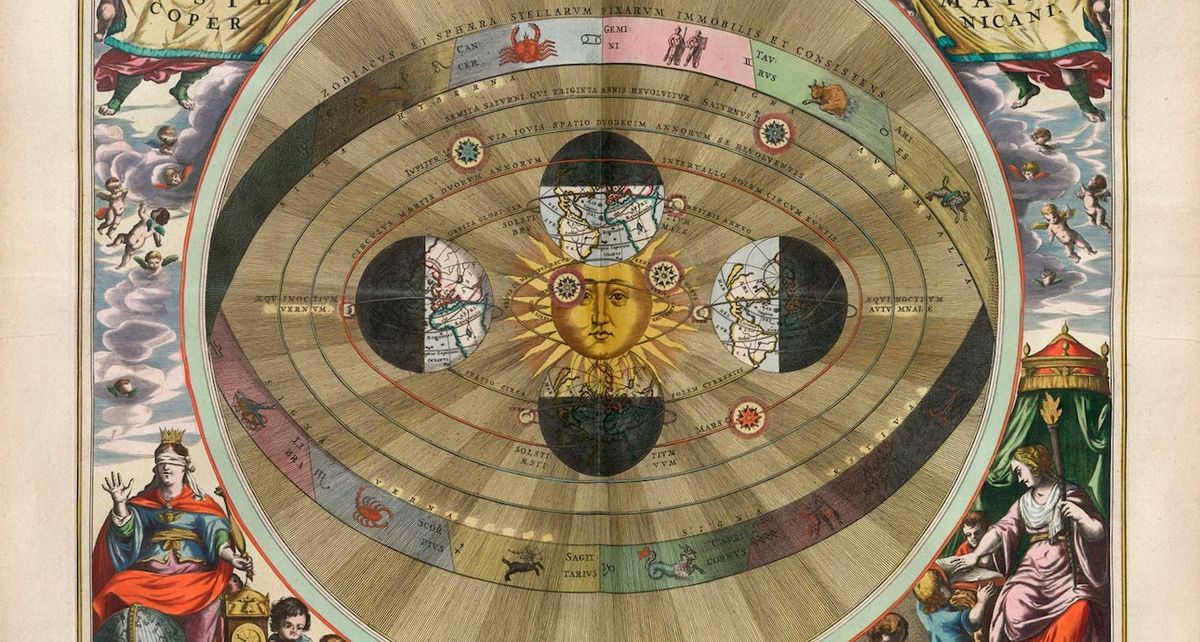
Around 80,000 years ago, a band of young Homo sapiens embarked on a historic journey beyond Africa. Since then, the quest for new realms has persisted. The descendants of these intrepid adventurers meticulously charted the Earth, set foot on the Moon, and marveled at the vastness of the Universe. But before these momentous achievements, they had several crucial milestones to conquer.
In the beginning, the worldview of early humans was simple: a flat Earth inhabited by spirits that explained perplexing phenomena. As knowledge advanced, the role of spirits diminished. The turning point arrived when humans realized that mathematics could separate facts from mysticism. Thus, the history of science commenced.
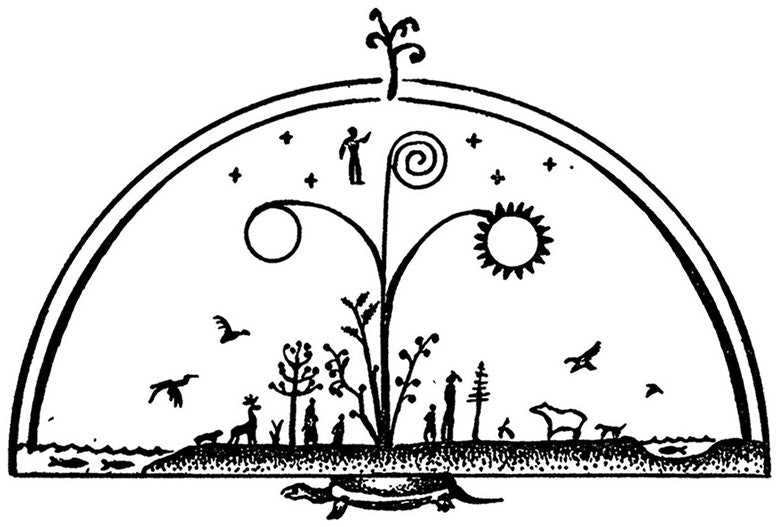
Ancient Concepts
The world we live in is governed by mathematical principles, although we may not always realize it. When we throw an object, its path can be described by a parabolic equation, and the movements of planets can be explained by the shape of an ellipse.
As early as the 6th century BC, Ancient Greek philosophers, including Pythagoras and Aristotle, began to describe the world using mathematics. They developed a theory called geocentrism, which held that the Sun, Moon, and planets all orbited around a round and stationary Earth.
While they were correct in discovering that the Earth is round, they were mistaken about many other aspects of the universe.
Heliocentrism – a mere two letters differentiate it from geocentrism, but those two letters mark a monumental shift in scientific understanding. In the 3rd century BC, Aristarchus of Samos proposed a revolutionary model in which the Earth both orbited the Sun and rotated on its own axis. However, this groundbreaking idea was met with resistance from the intellectual elite of the time. Those who clung to the notion of a geocentric universe, driven by a desire for mathematical harmony, argued that the pinnacle of creation must necessarily be situated at the center of the cosmos. To explain the seemingly irregular motion of celestial bodies, they relied on the concept of the epicycle – a mathematical crutch, so to speak.
An epicycle is an astronomical model in which a planet moves in a uniform manner within a small circle, while the center of that small circle, in turn, moves along a larger circle.
The concept gained popularity in European scientific circles for the following 1500 years, until Nicolaus Copernicus, a Polish astronomer, reintroduced Aristarchus’s notions of a sun-centered universe. Copernicus’s contributions sparked the onset of the initial scientific revolution.
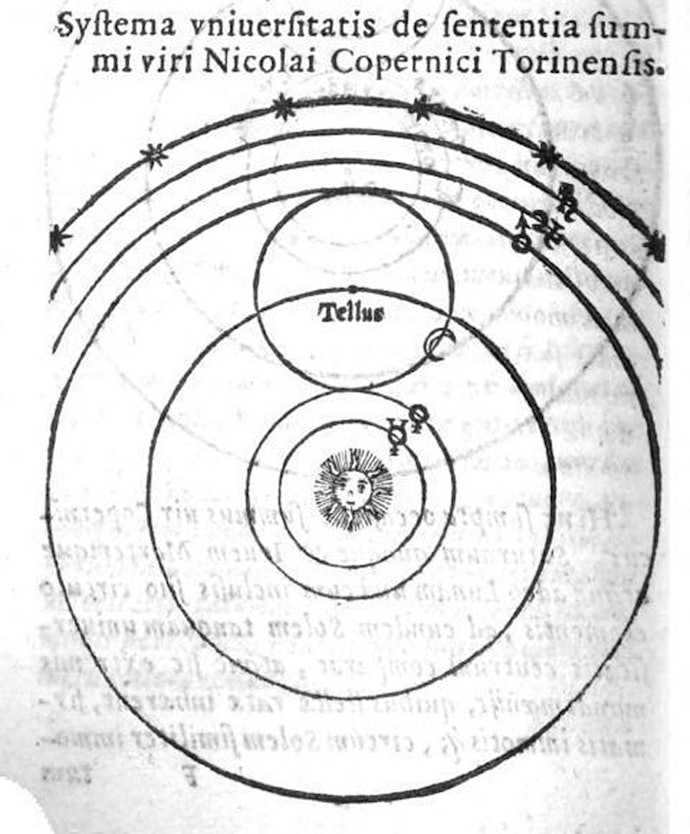
The revolution of science
The concept of geocentrism was strongly embraced by religious communities as it aligned with the idea of divine election. The acceptance of Copernicus’ theory was a long and arduous process. However, the Renaissance era, the rise of humanism, and the invention of the printing press acted as catalysts for a scientific breakthrough. Around the same time as Copernicus, Andreas Vesalius published a significant work – the first-ever textbook on human anatomy. In this groundbreaking publication, Vesalius dissected the “vessel of God” into its components, despite receiving no recognition for his efforts.
The invention of the printing press revolutionized communication and accelerated the advancement of our understanding of the world.
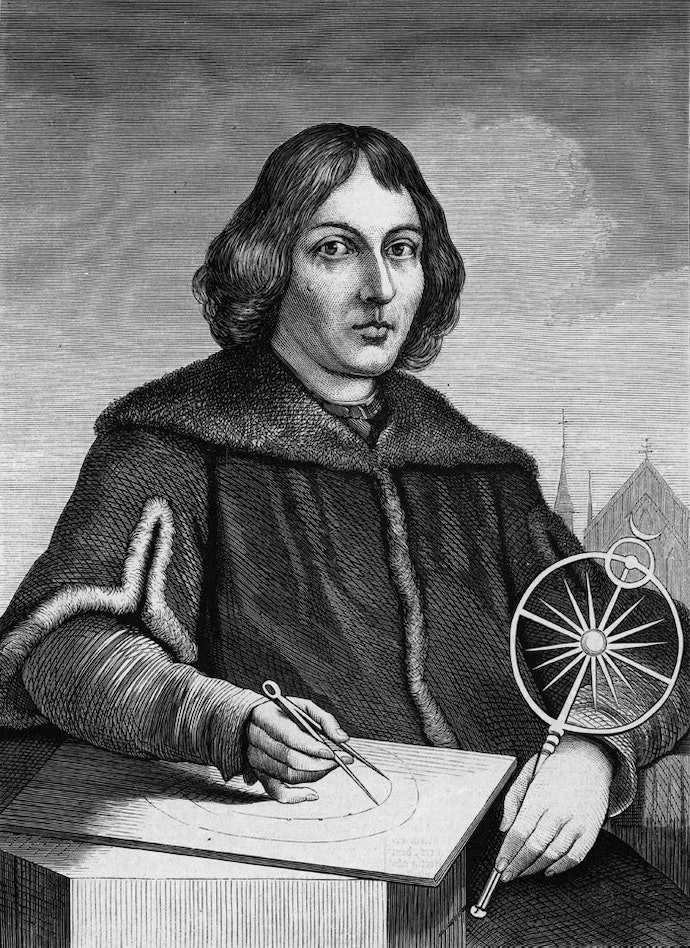
Nicolaus Copernicus. Picture: wikipedia.org

Image from Fabrica by Andreas Vesalius, illustrated by Jan van Calcar.
Kepler’s Laws
In the late 16th century, Johannes Kepler settled the debate on what revolves around what. He was employed by astronomer Tycho Brahe, who was the son of a wealthy oligarch owning a significant portion of Denmark. Brahe dedicated his life to compiling accurate tables of planetary motion, benefiting from his vast financial resources. Upon Brahe’s sudden demise, with rumors of poisoning, Kepler inherited the tables and spent the next decade producing his most fruitful work.
By utilizing the information gathered by Brahe, Kepler was able to demonstrate that the planets revolve around the Sun in an elliptical path and that their velocity increases as they come closer to the star. This breakthrough was met with great triumph. Overwhelmed by his profound revelations, Kepler dedicated the remainder of his existence to unraveling the celestial symphony of planetary orbits.
Curiously enough, the reason behind why planets accelerate as they draw near to a star would not be elucidated until two generations later by Isaac Newton.
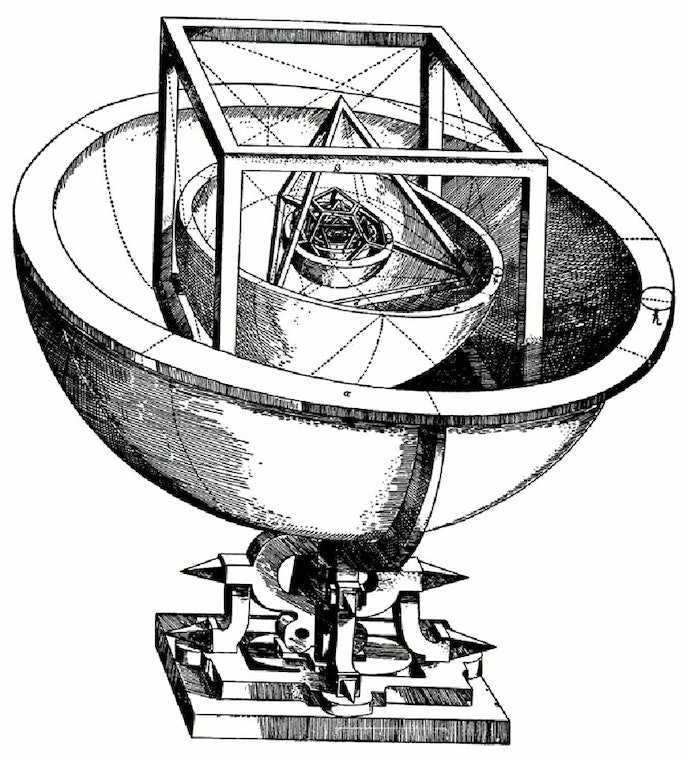
The mathematics behind motion
It is highly unlikely that an apple actually fell on Newton’s head, but this legend effectively captures the essence of his discoveries. Newton developed a set of differential equations that provide a universal description of how matter behaves. One of these equations is his law of universal gravitation. The remarkable thing is that objects as diverse as an apple and the moon follow the same law. By plugging in the mass of an apple and the way it is thrown, we can predict where it will land. Similarly, by inputting the mass and position of the moon, we can calculate the precise timing of all future and past eclipses.
Music of light
William Herschel, a musician by profession, had aspirations of becoming an astronomer. However, due to financial constraints, he was unable to afford a telescope. Undeterred, he took matters into his own hands and decided to construct one himself. In his quest to enhance light sensitivity, Herschel deviated from the traditional lens and instead opted for a metal mirror. With determination, he set up a furnace in the basement of his house and began experimenting with various alloys. Throughout this process, Herschel’s sister, Caroline, provided unwavering support as his constant assistant. Not only did she assist him with his experiments, but she also showcased her talents as a singer at his concerts. Furthermore, she played a crucial role in polishing the mirrors for their telescopes. Their efforts paid off, as they were able to assemble exceptional telescopes and establish a successful business by selling them.
William Herschel is renowned for his discovery of the planet Uranus, while his sister Caroline holds the distinction of being the first woman to discover a comet. The Herschel siblings’ achievements gained recognition from none other than the British monarch, King George III, who generously funded the construction of a colossal telescope featuring a one-meter reflector. With this groundbreaking instrument, William embarked on an ambitious endeavor – the meticulous mapping of every star. In 1785, he unveiled his captivating rendition of the cosmos, revealing the Earth’s location within a vast celestial disk composed of countless stars. This remarkable revelation marked the inaugural depiction of the Milky Way galaxy.
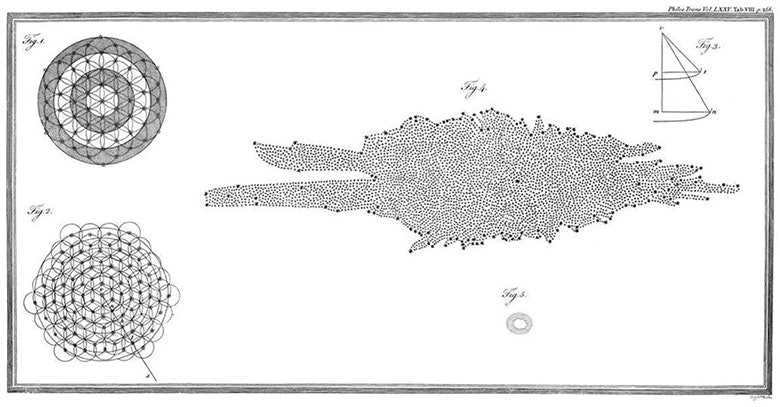
The Enigmatic Islands of Stars
During the time of Herschel, astronomers observed cloud-like formations, known as nebulae, scattered across the celestial sphere. A revolutionary theory emerged, suggesting that some of these nebulae might actually be galaxies, similar to our own Milky Way. However, the lack of precise distance measurement techniques hindered the ability to confirm this hypothesis. As a result, the true nature of nebulae remained shrouded in mystery until the advent of the 20th century.
The term “computers” was coined to describe the women who diligently performed routine calculations and recorded stars in the brightness catalog.
In 1902, Henrietta Livitt began her career as a computer at the Harvard College Observatory. Despite the fact that women were restricted from using the observatory telescope at the time, Livitt still managed to make a groundbreaking discovery. Her research on pulsating cepheid stars laid the foundation for a technique used to calculate distances to faraway celestial objects.
Edwin Hubble later utilized this method in 1925 to demonstrate that Andromeda was not a nebula within the Milky Way, but rather a separate galaxy. This revelation led to the realization that there are countless galaxies in the universe, with current estimates suggesting a staggering 100 billion or more.
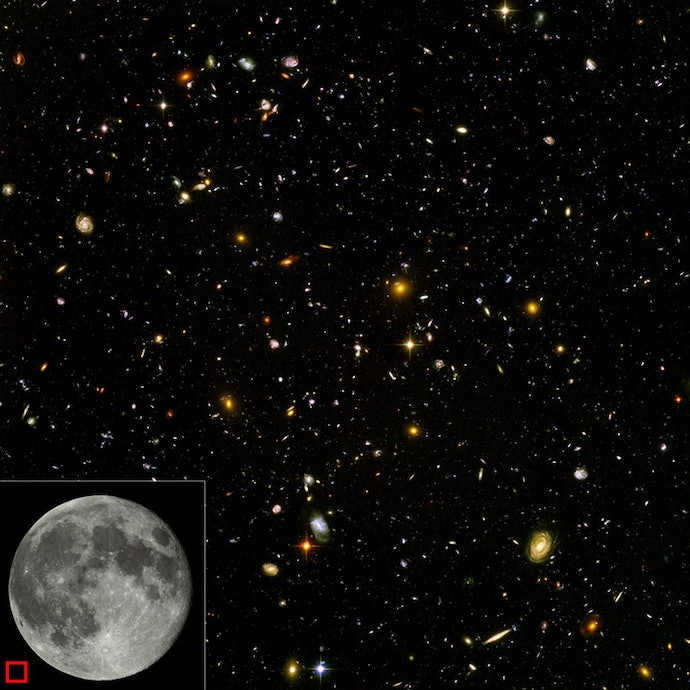
Gravity is not kind
The year 1916 marked the arrival of the second scientific revolution, courtesy of Albert Einstein. It was during this time that Einstein unveiled his groundbreaking theory of gravity. Although Newtonian mechanics had been proven accurate through observations, there remained a fundamental issue in understanding the true nature of gravity. In order for objects to exert influence on each other from a distance, there had to be some form of physical interaction, which in our case is gravity.
When it comes to areas of mass accumulation, Kardashian’s minutes will appear broader.
Einstein’s calculations led to a complete revolution in physics. However, there was a minor issue. The theory proposed the expansion of the universe, but there was no astronomical evidence to back it up. This caused great concern for Einstein, but his theories were eventually validated through the practical observations made by Edwin Hubble.
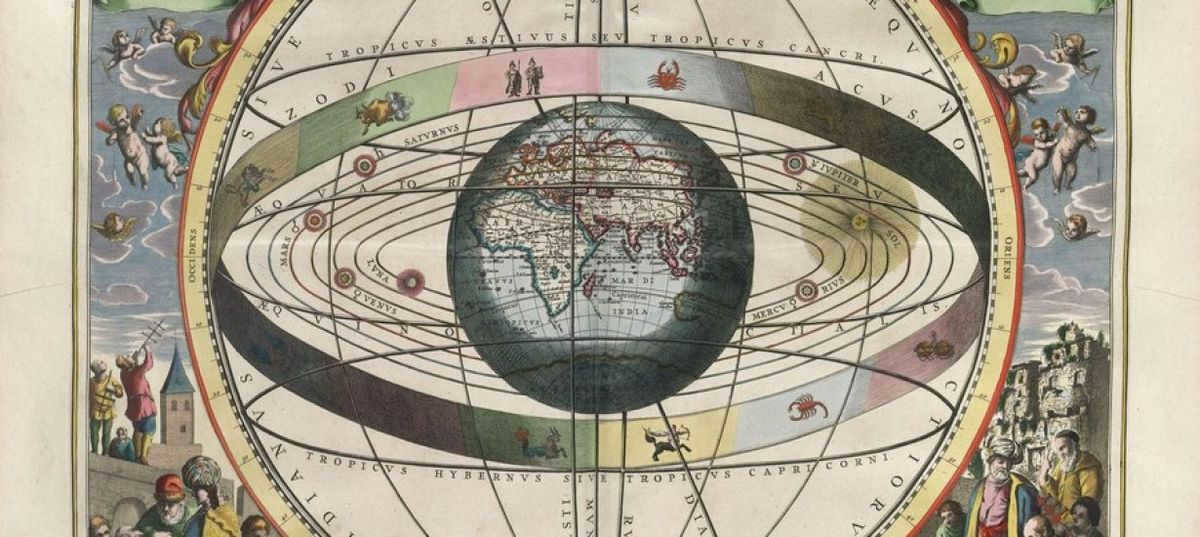
The geocentric concept of the structure of the universe posits that our planet Earth is positioned at the center of the cosmos. All other celestial bodies, on the other hand, orbit around Earth while it remains motionless.
We previously mentioned the geocentric model in our article on the evolution of scientists’ understanding of the solar system. Now, let’s delve into it in greater detail, exploring its origins, the arguments made in its favor, and the ultimate consequences it had.
Origin of the Geocentric System in History
Prior to being scientifically substantiated by astronomers like Claudius Ptolemy, the geocentric system had already found its roots in religious beliefs. Ancient Greek philosophers actively promoted their ideas along with their pantheon of gods. While the gods remained in Greece, the geocentric model gained worldwide popularity and persisted well into the Middle Ages.
As you are already aware, the geocentric system places Earth at the center, making it the focal point of the universe. Rather than being a spherical shape, the planet is depicted as a flat disk supported by immovable structures. Different religions symbolized these supports in various ways, such as three colossal elephants.
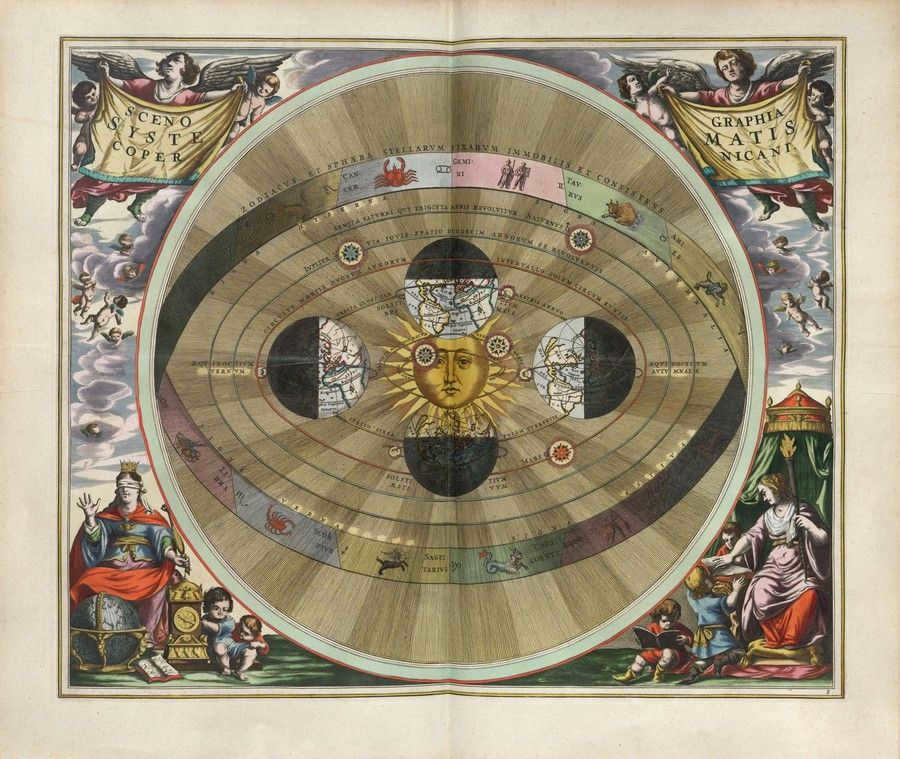
In ancient Greece, Thales of Miletus, a renowned scientist, proposed the idea that the Earth is situated in the vast ocean of the world and is simply held in place on its surface. When contemplating the structure of the entire universe, Thales reasoned that it must have a central-symmetrical arrangement. Based on these arguments, he concluded that the Earth is always in a stationary state. However, he dismissed theories suggesting that the Earth is supported by colossal elephants.
Another Greek scientist from ancient times, Anaximenes of Miletus, also focused on the geocentric system but had his own unique ideas about it. He proposed that the Earth is not simply suspended in space (and also did not believe in the elephant support theory). Instead, he believed that the planet is held together by compressed air. Surprisingly, this idea gained support within the scientific community of that era. Subsequently, influential figures like Plato, Aristotle, and Democritus built upon this concept in their own theories.
However, it was Pythagoras who came closest to the truth by suggesting that the Earth is shaped like a sphere. Although his model of the universe still adhered to the geocentric perspective, he was among the first to challenge the notion of a flat disk. Many scientists embraced this theory and collaborated to develop the “classical” geocentric system of the universe, which endured for centuries.
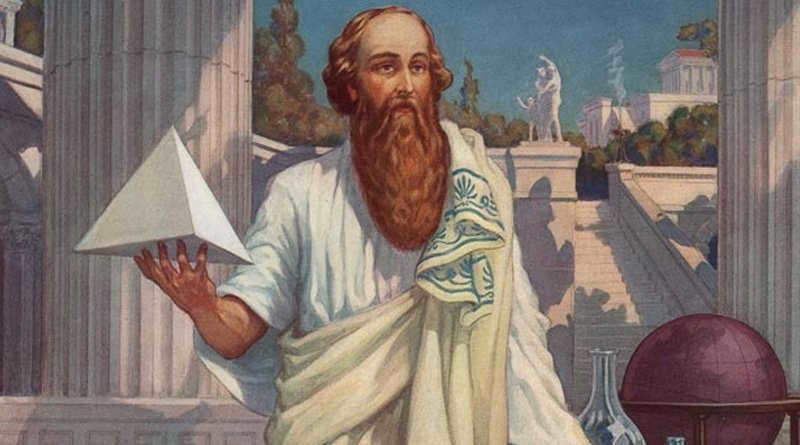
Validation of the geocentric model
Despite the fact that various scientists put forward different explanations for the geocentric system, there were still common themes in all versions. All astronomers agreed that the Earth is located at the center of the universe and remains stationary. However, opinions diverged in other aspects. For instance, Anaximander proposed the existence of spherical symmetry in the cosmos, while Aristotle argued that the Earth, being extremely heavy, must occupy the central position in the universe.
Philosopher Philolaus once suggested that our planet might move in some kind of orbit. However, Aristotle raised doubts about this idea, stating that the Earth’s motion would cause the stars to shift, which was not observed at that time.
Several other theories existed, such as the idea that the balance between day and night supported the concept of geocentrism. Ptolemy also argued that the Earth must be in the center and stationary because bodies in space fall strictly vertically. These arguments held significant persuasive power and were employed until the moment when the first laws of mechanics were uncovered.
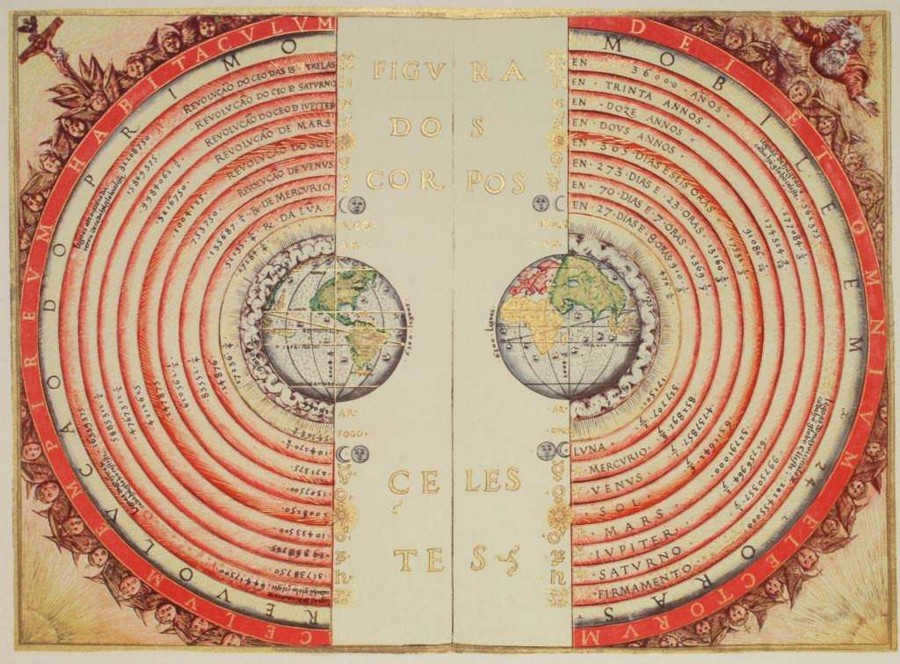

Scientists also shared their viewpoints on other celestial bodies, specifically their orbits around the Earth. Anaximenes, for instance, proposed that the revolution period of the Sun and other celestial bodies around our planet depends on their position in the sky. He even devised his own geocentric model, placing the Earth at the center, followed by the Moon, and then the Sun, Mars, Jupiter, and Saturn. There was no consensus among scientists regarding Venus and Mercury either. Plato and Aristotle believed that they were positioned behind the Sun. On the other hand, Ptolemy argued that the planets were in front of the Sun, but obscured from our view by the Moon.
Elucidation of celestial occurrences in geocentrism
Ancient Greek astronomers engaged in fervent discourse regarding geocentrism, endeavoring to elucidate diverse cosmic phenomena within the confines of this theory. However, despite their efforts, they encountered considerable difficulty comprehending the most elementary and apparent aspects. The initial challenge arose when attempting to justify the erratic motion of the planets. As the planets themselves were perceived as genuine deities at the time, astronomers believed that they should have traversed their paths with utmost fluidity and uniformity.
Despite facing numerous challenges and making mistakes along the way, the ancient Greeks persevered in their belief in their model and put forth innovative theories. As a result, they were able to explain the intricate movements of the planets by attributing them to the combination of multiple circular motions. This eventually gave rise to the development of theories concerning epicycles and homocentric spheres, concepts that found application not only in ancient Greece but also in many other nations.
Even the Jews took note of the geocentric model of the universe, with the Earth depicted as a spherical object positioned at the center of the cosmos, although their understanding of our planet at that time was limited to it being flat. Jewish astronomers swiftly adopted the ideas put forth by their Greek counterparts. Among the early proponents of this theory was Moses Maimonides, who actively opposed the concept of epicycles and instead aligned with Aristotle’s perspective on the structure of the universe.
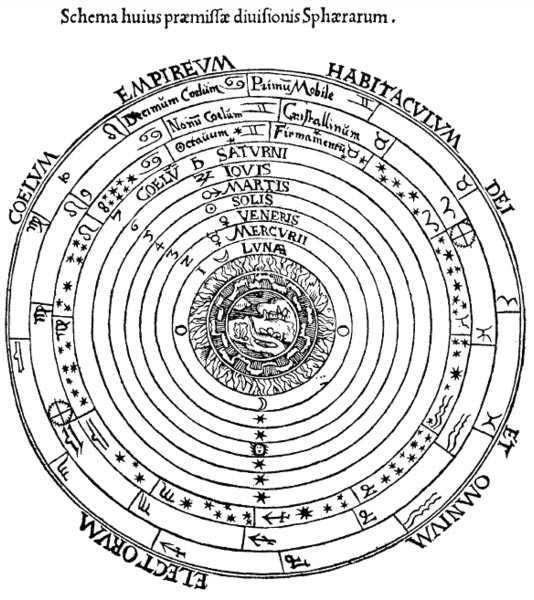
Byzantine theories
Byzantium had its own interpretations of the geocentric model of the universe as well. Alexandria, known for its contributions to Hellenistic science, placed significant importance on astronomy. Some local scientists even questioned the accuracy of the geocentric system. However, they also rejected the idea that the Earth could be spherical in shape.
Despite the intelligence of Byzantine philosophers, they adamantly refused to entertain any modifications to the existing model. Their belief in Aristotle’s theory was unwavering, causing them to dismiss any new hypotheses. As a result, the Byzantine geocentric model never progressed.
Adoption of a New System
In the 17th century, a significant shift occurred in the field of astronomy, as the geocentric system was rejected in favor of the heliocentric system. This transition was initiated by Copernicus, who proposed a new model. Galileo, after inventing his first telescope, provided compelling evidence to support the heliocentric theory. Kepler then further developed and solidified the theory, ultimately establishing the form that it still holds today.
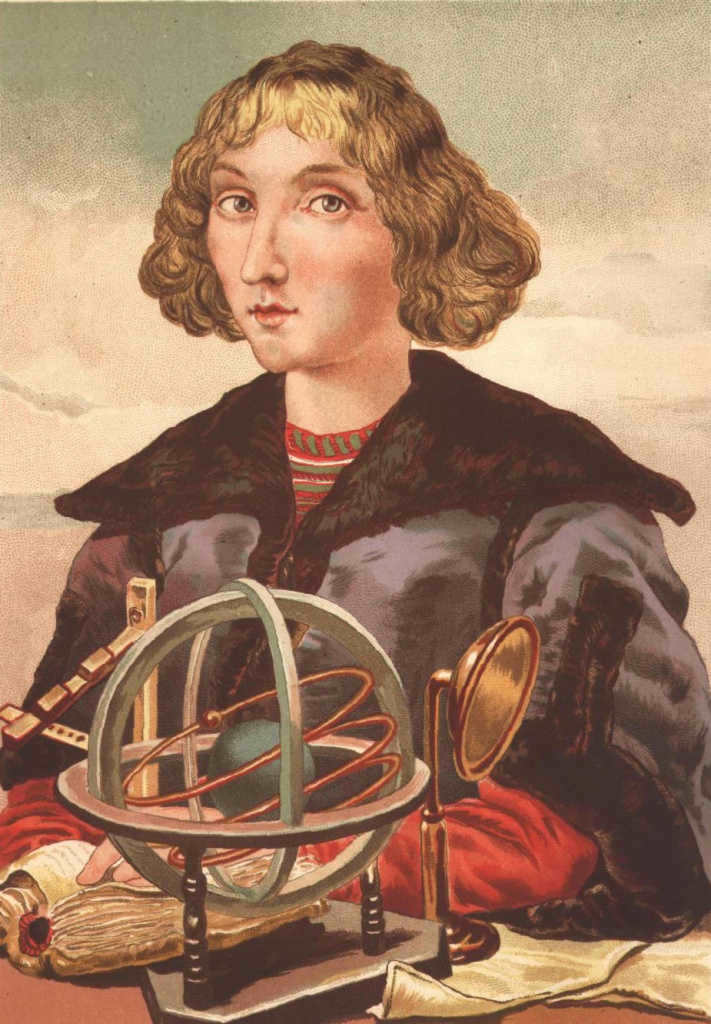
Religion and the concept of the universe’s structure
Despite the acceptance of the heliocentric model by the scientific community, there were religious philosophers who continued to hold onto the belief in geocentrism. They argued that the heliocentric system contradicted divine laws and patterns.
The Christian church has traditionally advocated for the notion that Earth was created by God for human beings. Even today, certain conservative religious groups maintain their belief in the geocentric model. Furthermore, there is ongoing debate about whether the Bible supports the idea of a flat or spherical Earth.

The geocentric system of the world placed the Earth at the center, with all other celestial bodies, including the Sun, Moon, planets, and stars, orbiting around it. This concept emerged during a time when mankind was just beginning to ponder the intricacies of the universe, but it was the ancient Greeks who truly propelled geocentrism forward. It wasn’t until the 16th century that Copernicus, the founder of the heliocentric system, ultimately disproved this theory.
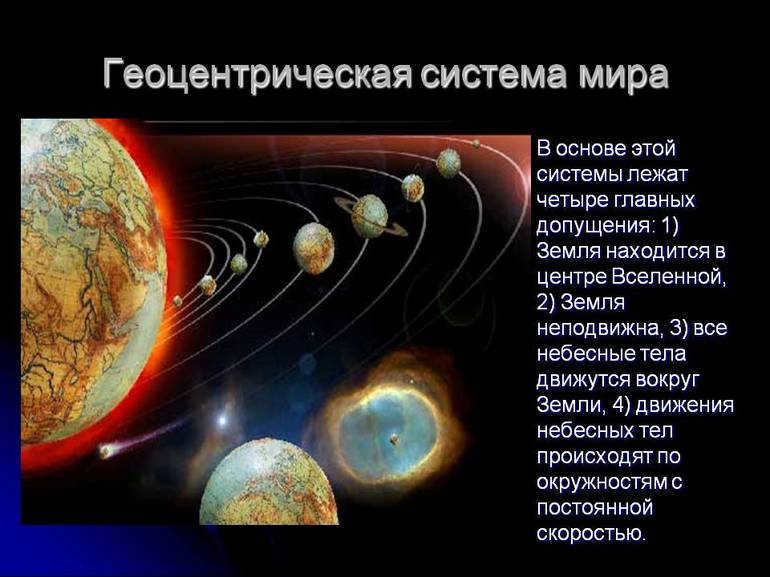
The emergence of the geocentric world system in ancient times
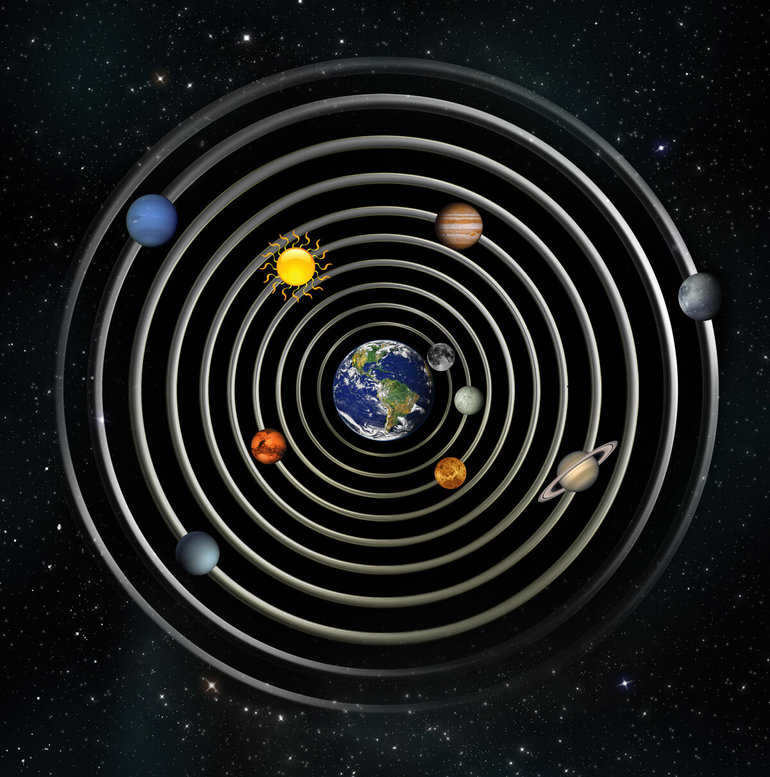
- Thales of Miletus held the belief that the planet is suspended in the world ocean.
- Anaximenes of Miletus presented evidence that it had a disc shape and that it was prevented from falling by compressed air.
- His mentor Anaximander theorized that all objects are drawn towards the center of the universe, where the Earth is situated, which is shaped like a wide cylinder and has no motive to move elsewhere.
Pythagoras was the first to propose that the Earth had a spherical shape. Aristotle supported this concept. He observed that a lunar eclipse occurs when the Sun, Earth, and Moon are aligned in a straight line. The Earth’s shadow falls on the full Moon and obscures its brightness. This shadow is always circular, indicating that it can only be cast by a sphere.
The universe revolves around the Earth
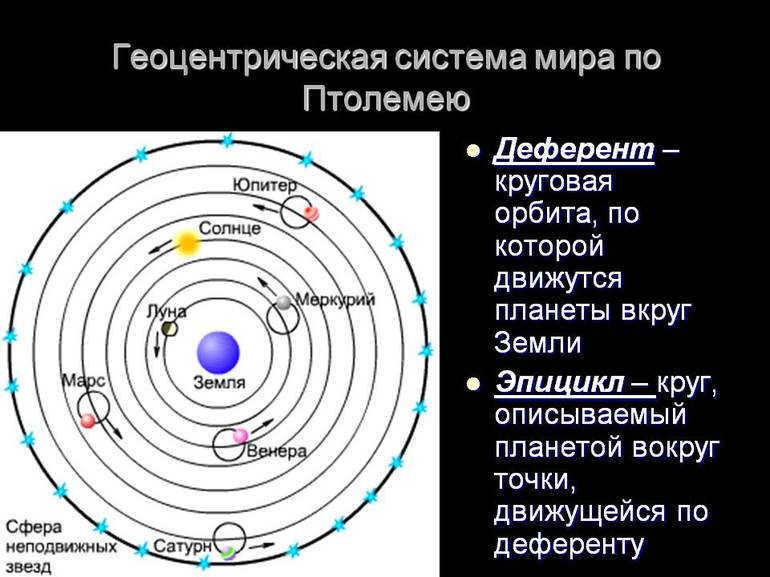
Aristotle made an observation that objects with more weight fall straight down. He concluded that they are attracted to the center of the world. The Earth is the heaviest object, which is why it is positioned at the center. According to Aristotle, this is the natural order of the universe. On the other hand, the Pythagoreans believed that the Earth could revolve around something else, but Aristotle disagreed. He argued that if the Earth moved, the Moon would be visible from different angles. Since this is not the case, Aristotle concluded that the Earth is stationary and the Moon is the one moving. It is worth noting that he was correct about this. However, Aristotle did not consider the possibility of celestial bodies orbiting around other astronomical objects.
The position of the sunrise changes throughout the year due to the tilt of the Earth’s axis. However, there are only a few days, known as solstices, when the Sun rises at the same point. Pliny the Elder considered this phenomenon as evidence of the Earth’s central position.
On the contrary, Cleomedes provided evidence against the theory of geocentrism. He argued that if the Earth were located east of center, the shadows at sunrise would be shorter than at sunset, which is not the case. Additionally, if the Earth were shifted to the north or south, the shadows would not align strictly along an east-west axis, but would instead shift either northward or southward. Unfortunately, this theory implies the existence of a central point in the universe around which the Sun revolves, which is not true.
Cleomedes also argued against the idea that the Earth could be located either above or below the center. According to him, if the Earth were in such a position, we would be able to see more or less than half of the firmament, depending on its location. However, since this is not the case, it must mean that the Earth is indeed at the center. What Cleomedes failed to consider, though, is that the firmament is not a dome and the stars are not attached to it.

Ptolemy presented similar arguments supporting the geocentric model. Additionally, he provided an explanation for why the Earth does not rotate on its axis. Imagine traveling in a car (or cart, considering the time when the theory was created), and observe how loose objects roll backwards. This phenomenon is known as inertia.
The philosopher hypothesized that the same principle would apply to objects on Earth. If the Earth were rotating, clouds would not be able to move eastward; instead, they would be swept backwards in an instant. However, this does not occur, indicating that the Earth is stationary at the center of the coordinates. Only in the 19th century was it possible to disprove this theory, thanks to the discovery of Newton’s first law. According to this law, if an object is moving in a uniform and straight path, there is no inertia.
Other celestial objects
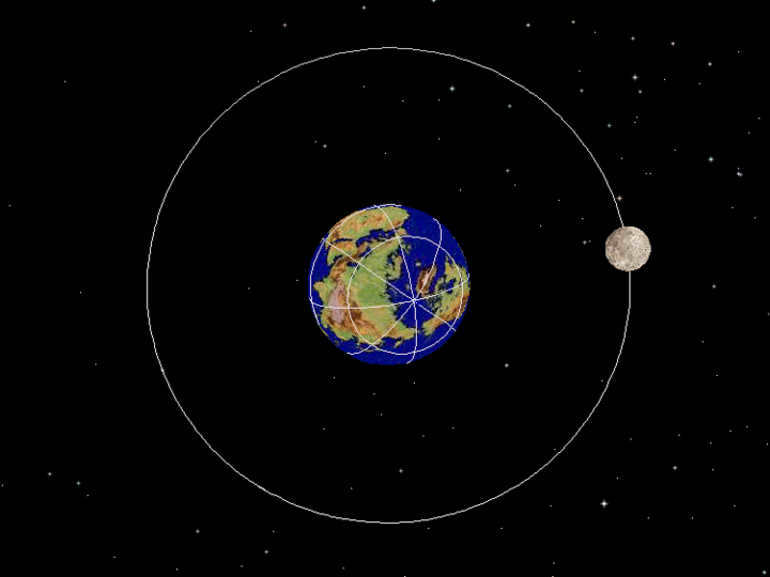

The geocentric system has the advantage of providing a simple, clear, and, according to ancient knowledge, logical explanation for the structure of the universe. It explains how the moon revolves around the Earth without falling onto it, and how the Sun and other stars appear to orbit the Earth.
However, when it comes to the planets, problems arise. They also revolve around the Sun, but at different speeds, causing them to appear to move in loops along an unusual trajectory. This phenomenon was referred to as retrograde motion in ancient astronomy.
This phenomenon could not help but deviate from the original theory. Additionally, in ancient times, the planets were revered as immortal deities, and they were expected to remain steady and unchanging. To account for their observed movement, philosopher Apollo of Perga formulated the theory of epicycles. To visualize this, we can imagine a potter’s wheel. The Earth is positioned at its center, while a small circle is situated near the wheel’s edge. This circle rotates, causing the planet to move both in unison with it and independently. The planet acts as the pivot point, drawing closer to and moving further away from the Earth.
While the theory of epicycles was ultimately disproven by astronomy, it did provide a valuable framework for describing and accurately predicting planetary interactions for a significant period of time. This perspective held sway until the 16th century.
Astronomy during the Medieval Period
Following the decline of the ancient world, the rise of Christianity, and the fall of the Roman Empire, the geocentric theory of the universe was forgotten. However, instead of being replaced by heliocentrism, it was succeeded by the concept of a flat Earth. In the 6th century AD, Cosmas Indikoplov, a Byzantine merchant, published a book called “Christian Topography”. This book presented the world from a biblical perspective, emphasizing its idealistic nature. The author made the following claims:
- The Earth is flat and positioned in the center of the ocean;
- The sun’s disk revolves around the Earth;
- The firmament separates the celestial realm above from the mortal earthly realm below.
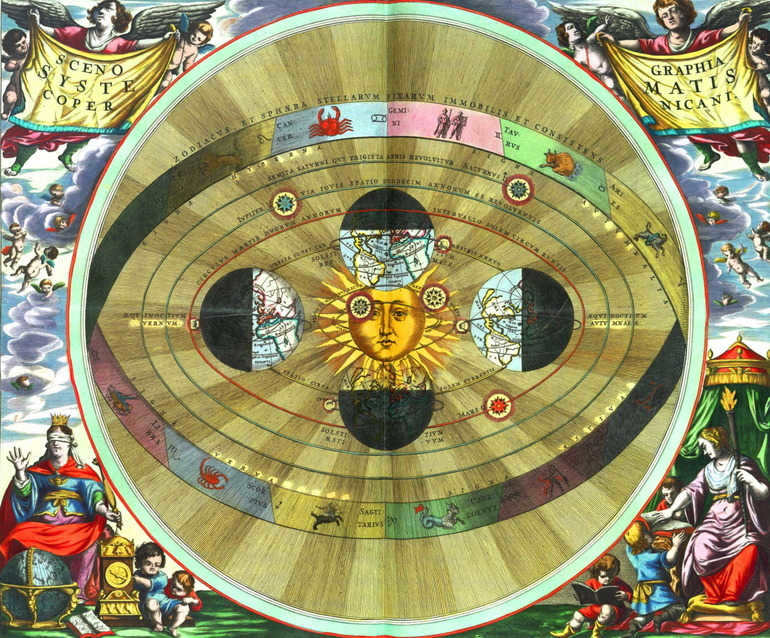
This theory contains numerous allegorical elements and is only loosely connected to actual geography. Instead of relying on tables and mathematical calculations, it is rooted in concepts of a Christian utopia. As a result, the popularity of the book declined within just two centuries.
Regrettably, Byzantine scholars did not attain the same level of advancement as their Greek predecessors. The theory of geocentrism was nearly forgotten and continued to develop not in the Western world, but in the Islamic East.
As early as the 8th century AD, the Arabs took on the responsibility of translating the works of Aristotle and Ptolemy into Arabic. During the Dark Ages in Europe, they served as the custodians of ancient knowledge for many years.
The concept of geocentrism was studied and developed by Islamic scholars who sought to understand the positioning of celestial bodies relative to the Earth. One such scholar, Jafir ibn Aflah, proposed a theory that positioned the Moon as the closest celestial body to the Earth, followed by the Sun, stars, and planets.
Mathematicians in Andalusia, which was under Arab rule in the 13th century, voiced their opposition to the theory of epicycles. This theory went against Aristotle’s belief that the Earth was the center of the universe and the only point of rotation. Astronomers attempted to demonstrate that the planets were indeed moving in a circular motion, but not on the same plane as the Earth, giving the illusion of reciprocal motion. Regrettably, this theory contradicted all empirical evidence and was ultimately disproven.
The rise of the heliocentric model
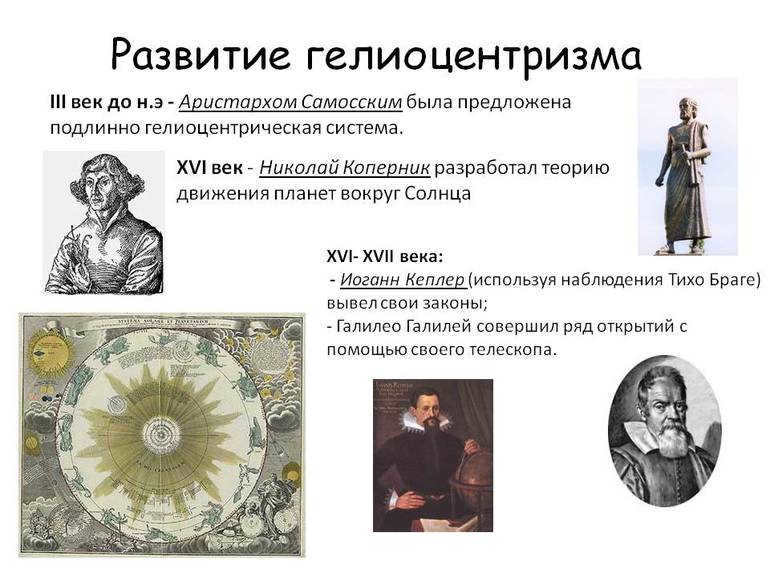

In the 16th century, the Polish scientist Nicolaus Copernicus put forward a revolutionary idea that challenged the prevailing belief that the Earth was the center of the universe. Copernicus proposed that the planets actually revolve around the Sun, marking the beginning of a new era in scientific thought. This groundbreaking discovery sparked a paradigm shift in how scientists approached their understanding of the world, shifting from trying to fit the universe into preconceived notions to observing and analyzing reality as it truly is. Heliocentrism became the cornerstone of modern science.
However, Copernicus faced opposition from his contemporary, Danish astronomer Tycho Brahe. While Brahe did not fully embrace heliocentrism, he also could not completely reject it. Instead, he proposed a modified version called the geo-heliocentric system, in which the Earth remained at the center of the universe, while the Moon and the Sun orbited around it, and the other planets circled the Sun.
The competing theories of Brahe and Copernicus vied for supremacy in the following decades, until heliocentrism ultimately emerged victorious. This triumph was aided by the advent of the telescope and the revelation of Isaac Newton’s law of universal gravitation.
Naturally, the geocentric model of the universe in astronomy is now recognized as erroneous in the modern era, but it represented the initial endeavor to scientifically elucidate cosmic phenomena. Ancient philosophy grappled with folklore and allegory, and against this backdrop, geocentrism, despite its flaws, stands as the pinnacle of scientific thought. It established the groundwork for all subsequent developments in astronomy.
The general theory of relativity, formulated by Einstein, plays a crucial role in shaping our understanding of the structure and development of the universe. It extends Newton’s theory of gravitation to account for massive bodies and the velocities of matter approaching the speed of light.
A significant contribution to the cosmological model of the universe within the framework of the general theory of relativity was made by Soviet mathematician Friedman A. He demonstrated that a universe uniformly filled with matter would be non-stationary, providing an explanation for the observed dispersion of galaxies.
Cosmology is the scientific discipline that investigates the structure and evolution of the universe.
The Theory of the Big Bang, originally known as the model of the hot Universe, is a cosmological concept that explains the early development of the Universe as a whole. The proposal was made by Russian-American physicist Gamow G.A. Gamov.
The term “Big Bang” (Big Bang) was first used by the renowned British astronomer and cosmologist Fred Hoyle during his lecture in 1949.
The size of the universe is estimated using Hubble’s Law, R = 1.3 ∙ $10^$ sv years = 1.24 ∙ $10^$ m.
The age of the Universe is estimated using Hubble’s law, t = 13 ∙ $10^$ years.
The critical density value of matter determines the future motion of the Universe (expansion or contraction) and is denoted as $ρ_$ = 10$^ kg/m^3$.
Relict radiation – radiation remaining from the initial hot state of matter during the universe’s expansion.
Dark matter – A theoretical substance that does not emit electromagnetic radiation and does not interact with it directly.
Dark energy – a hypothetical form of energy incorporated into the mathematical model of the Universe to account for its observed accelerated expansion.
Timeline of the Universe’s History According to Carl Sagan
Representation of the Universe
The inflationary model is a hypothesis that suggests that at the beginning stages of the Universe, it existed as a “false vacuum” – a metastable state without actual particles, which didn’t immediately transform into a real physical vacuum due to the presence of a potential barrier. This false vacuum rapidly expanded and, utilizing quantum mechanics (which allows for such processes), tunneled through the mentioned barrier. This resulted in the false vacuum “falling” into the real physical vacuum, which has much lower energy. Consequently, a tremendous amount of energy was released, leading to intense heating and the emergence of actual particles in the Universe, following the laws of thermodynamics. Since then, the expansion of the Universe (albeit at a significantly slower pace) and gradual cooling (on average) have been occurring, as predicted by the widely accepted model of a hot Universe.





- ALGEBRA
- ALGEBRA AND THE BEGINNINGS OF MATHEMATICAL ANALYSIS
- ENGLISH
- BIOLOGY
- ALL-RUSSIAN OPEN LESSON
- GEOGRAPHY
- GEOMETRY
- NATURAL SCIENCE
- FINE ARTS
- INFORMATICS
- SPANISH LANGUAGE
- HISTORY
- CHINESE LANGUAGE
- LITERATURE
- LITERARY READING
- MATHEMATICS
- MUSIC
- GERMAN LANGUAGE
- GENERAL SCIENCE
- ENVIRONMENTAL WORLD
- BASICS OF LIFE SAFETY
- LAW
- RUSSIA IN THE WORLD
- RUSSIAN LANGUAGE
- TECHNOLOGY
- TECHNOLOGY (GIRLS)
- TECHNOLOGY (BOYS)
- PHYSICS
- PHYSICAL EDUCATION
- FRENCH LANGUAGE
- CHEMISTRY
- ECOLOGY
- ECONOMICS





